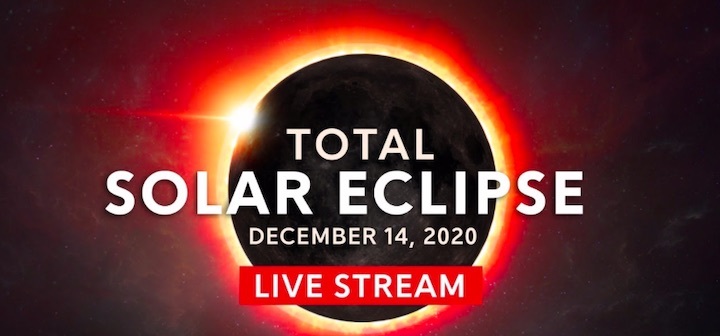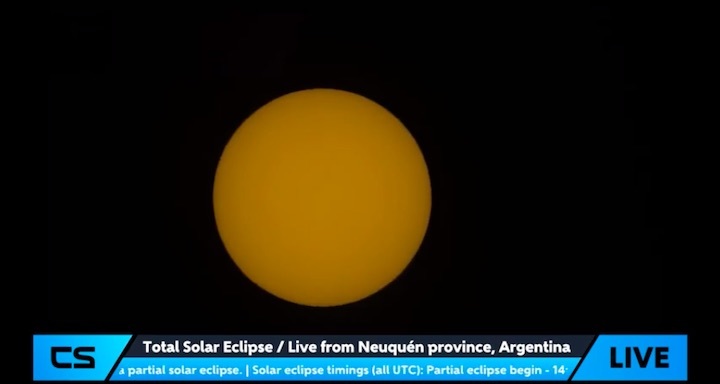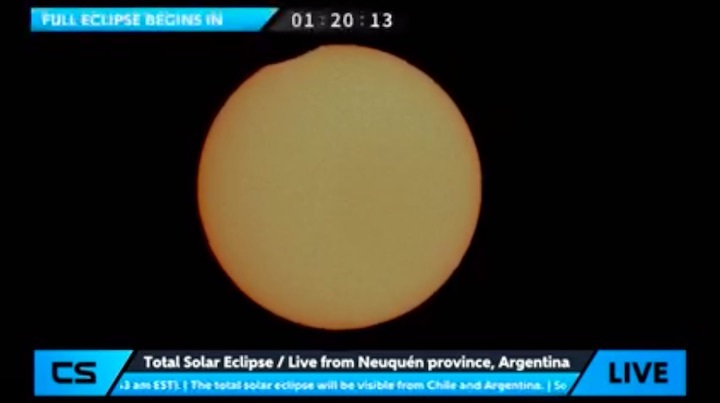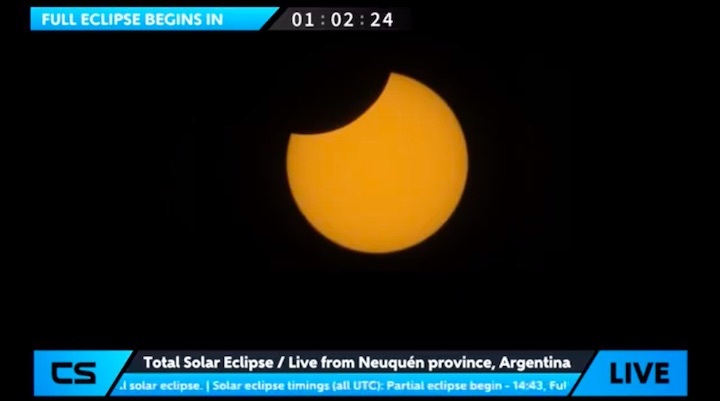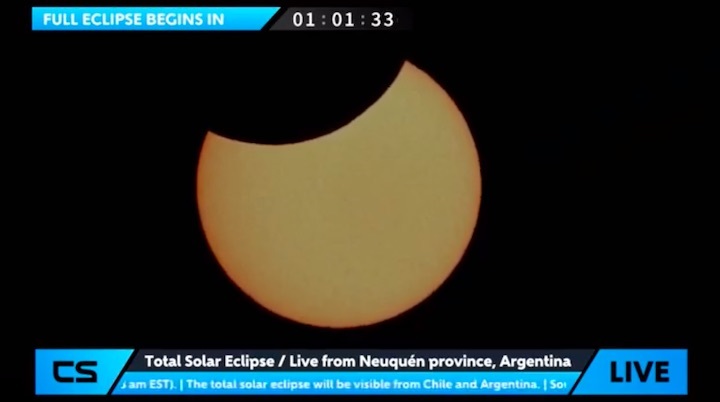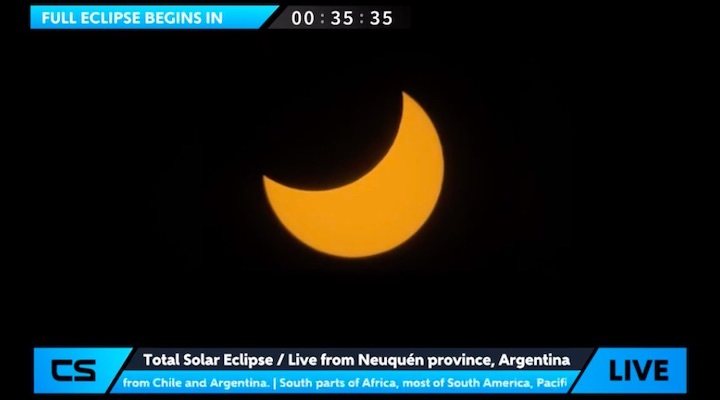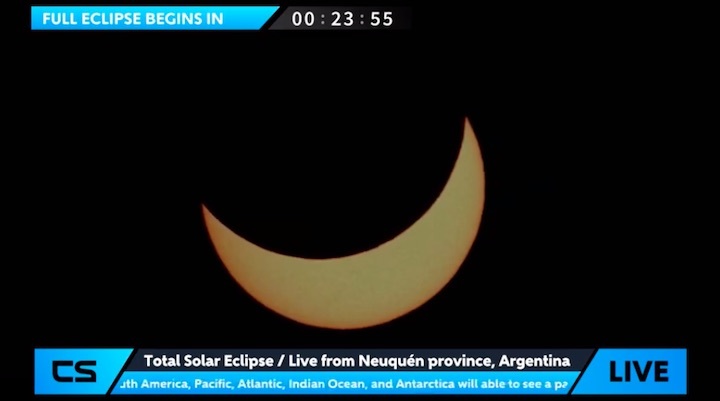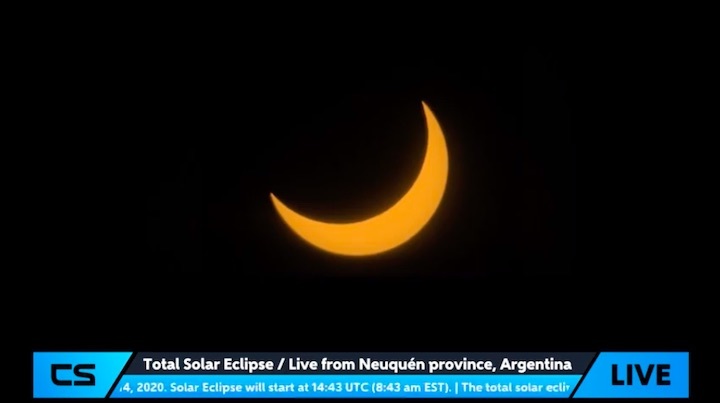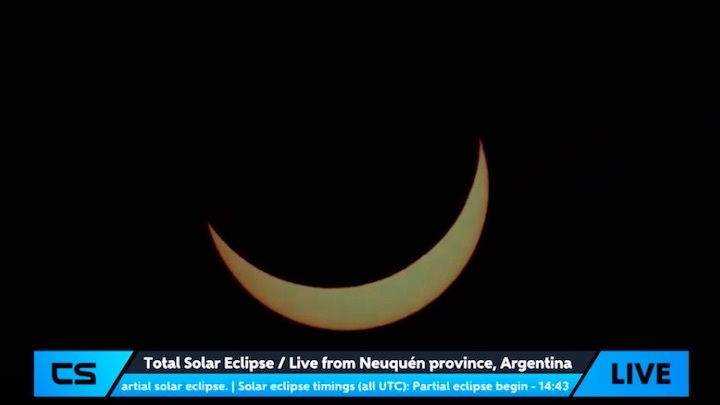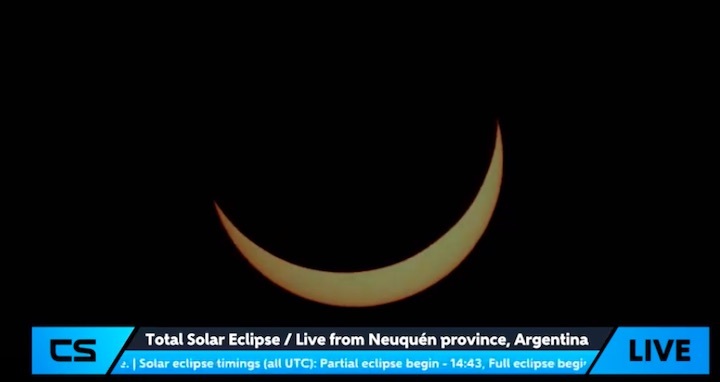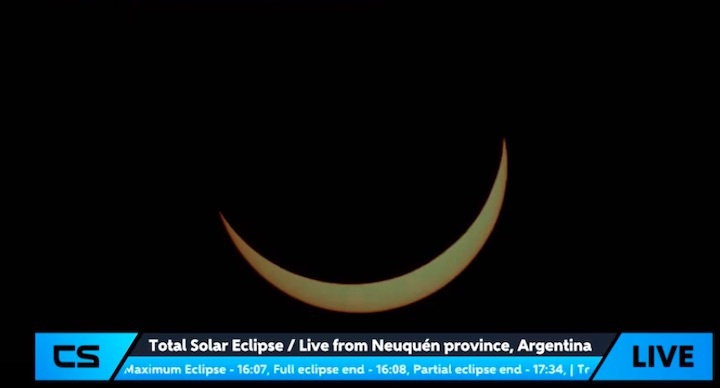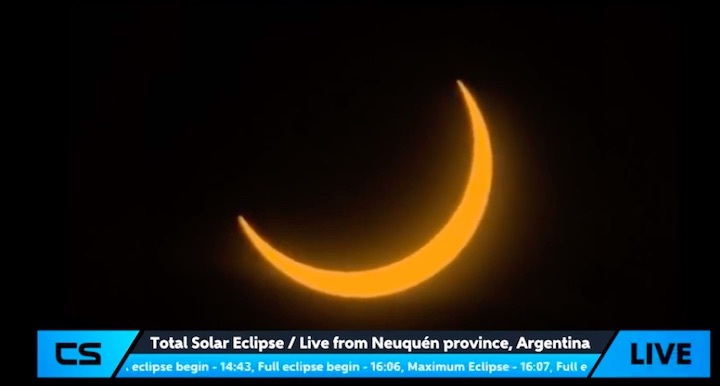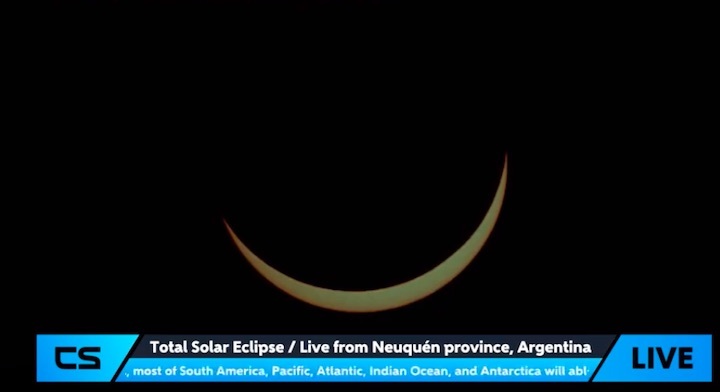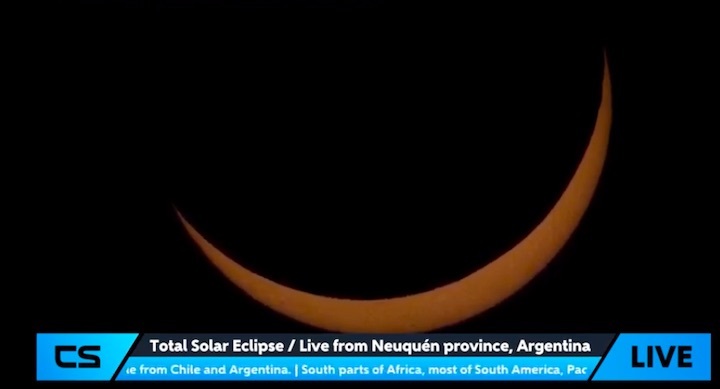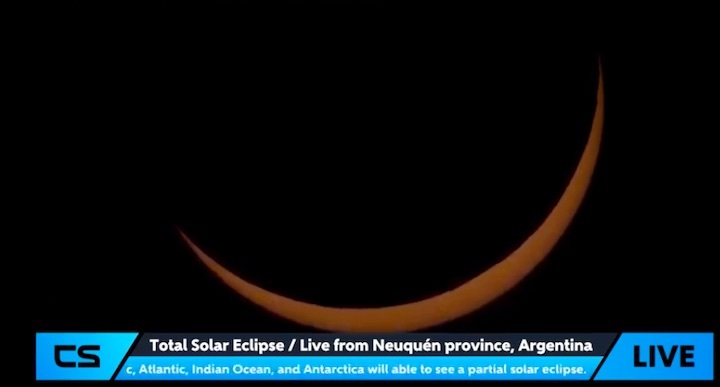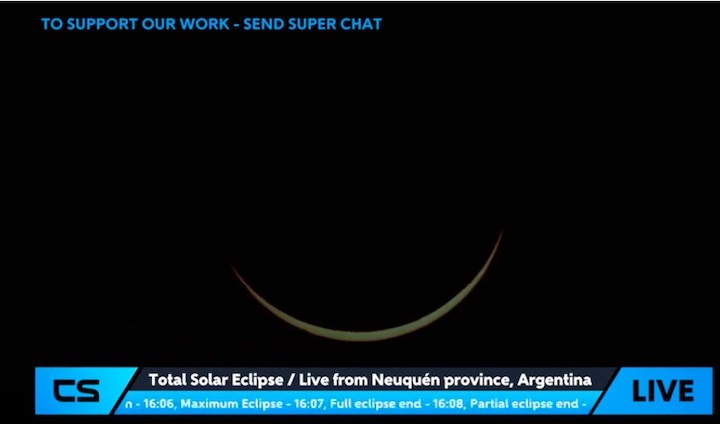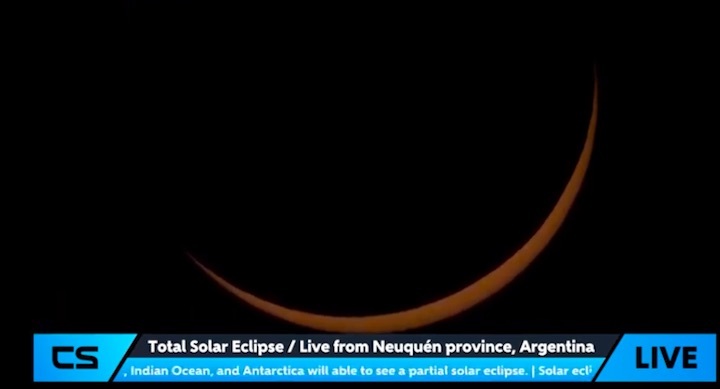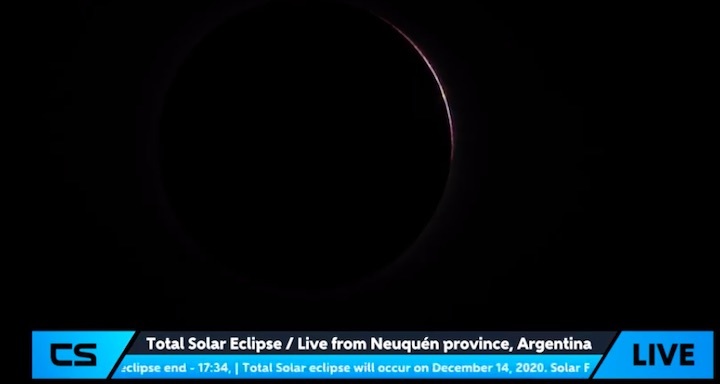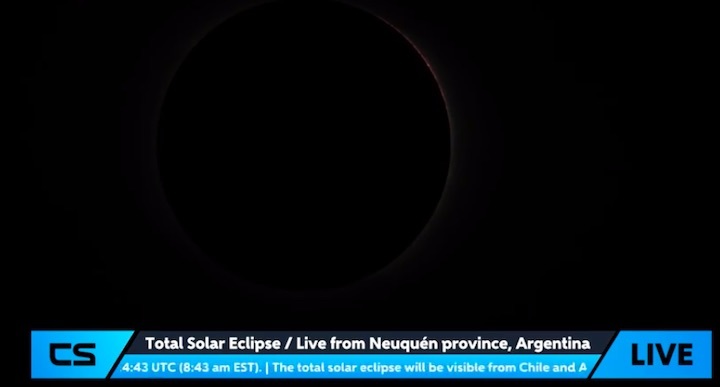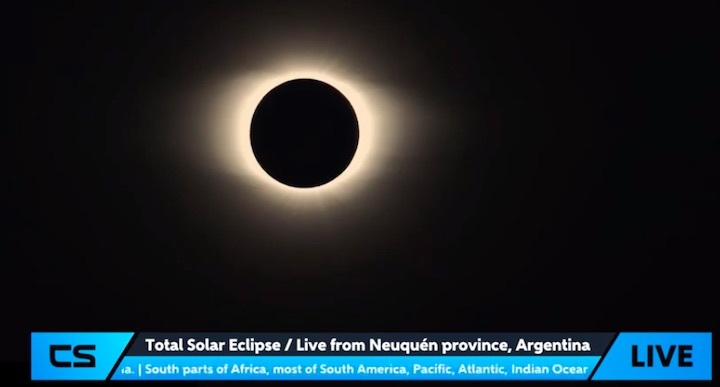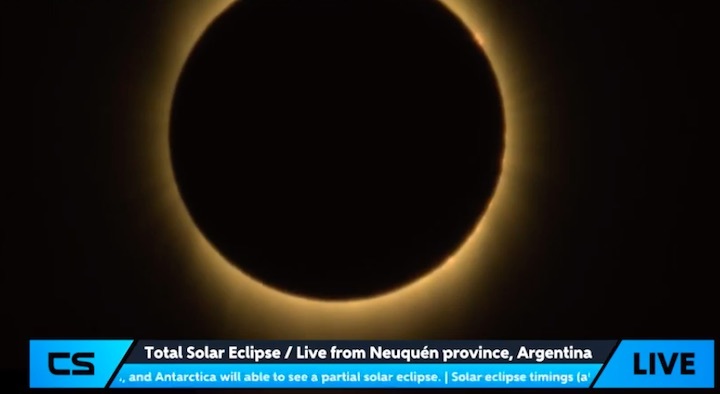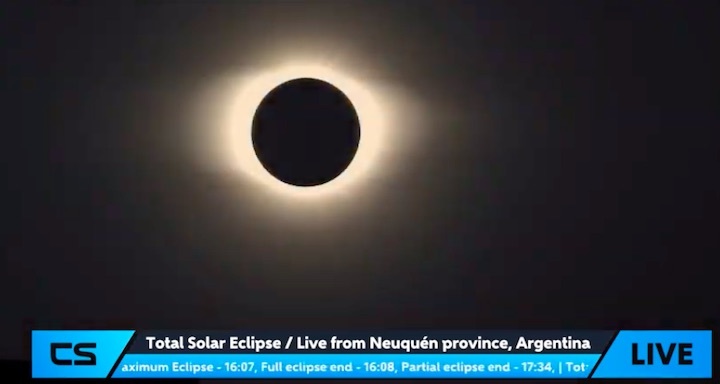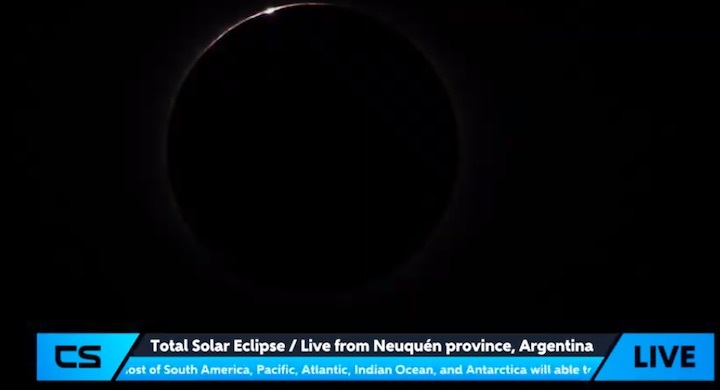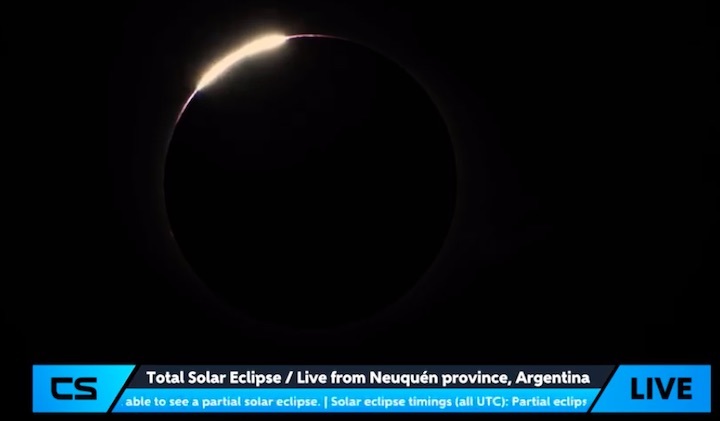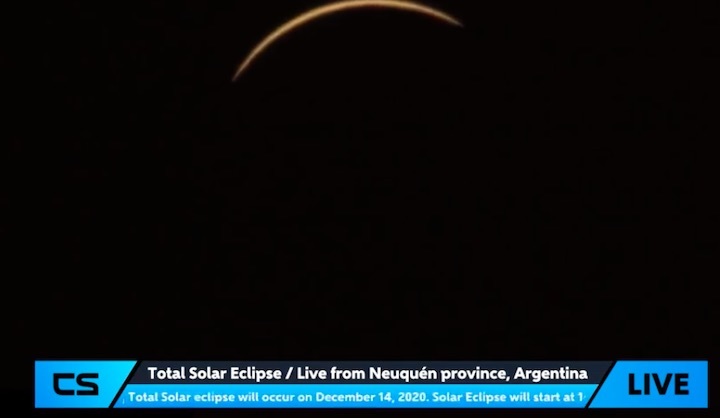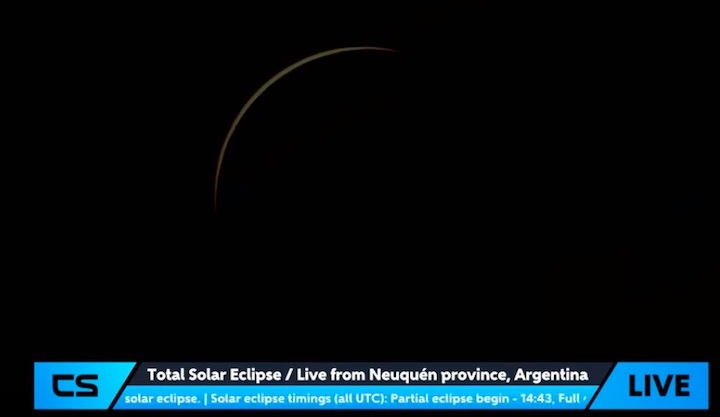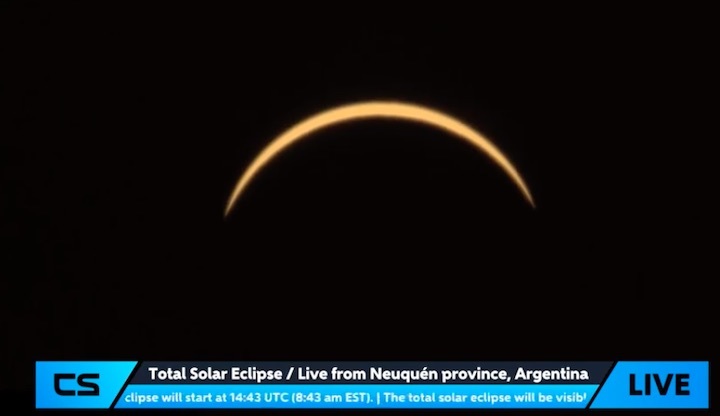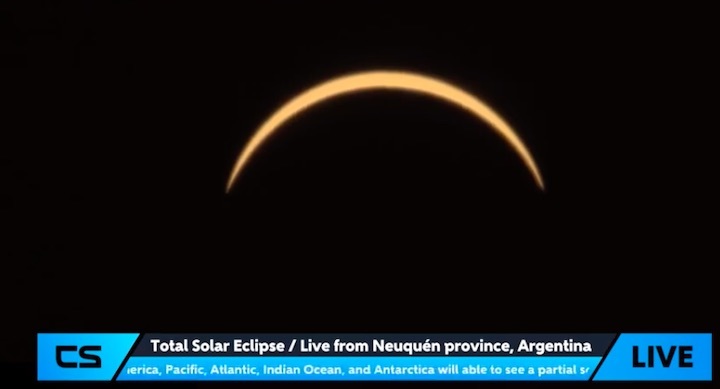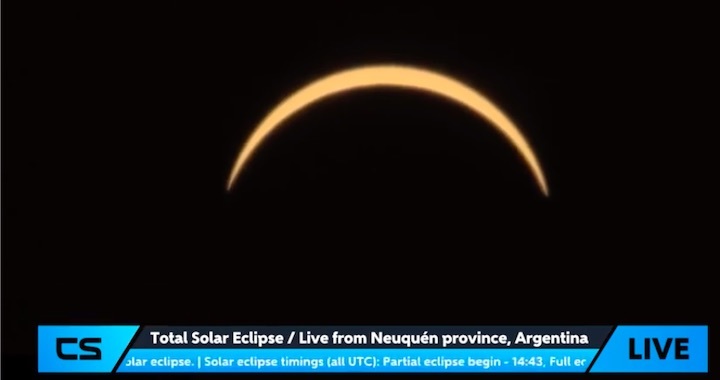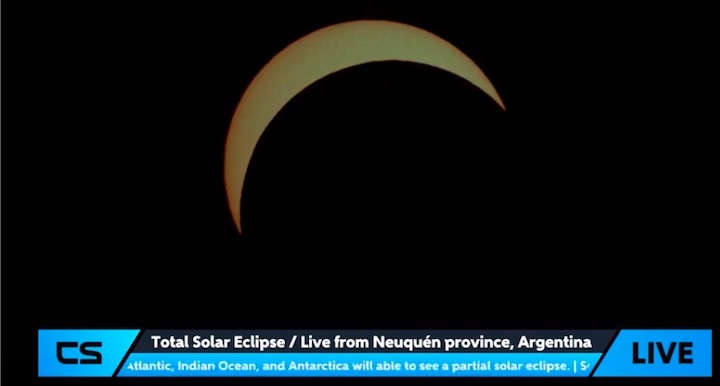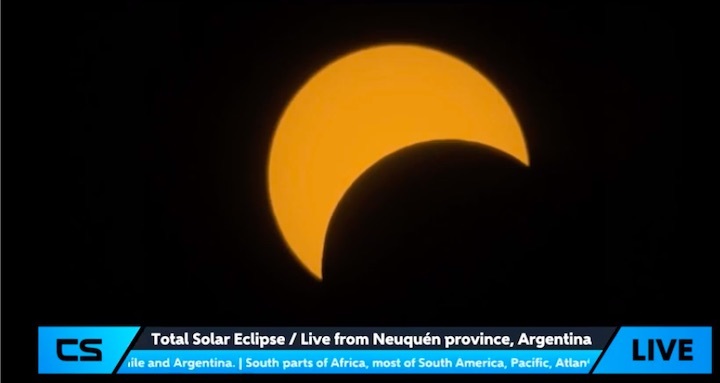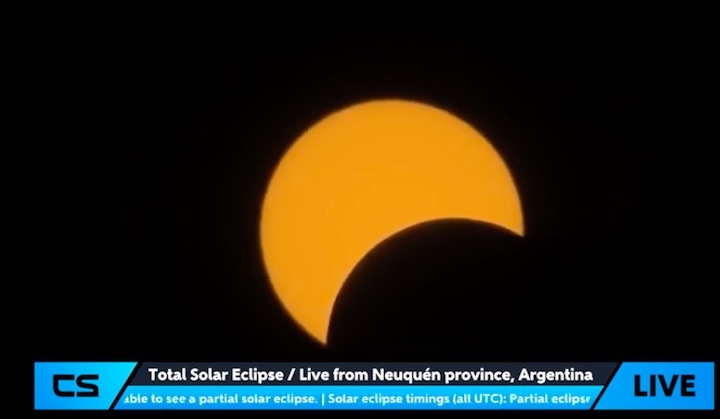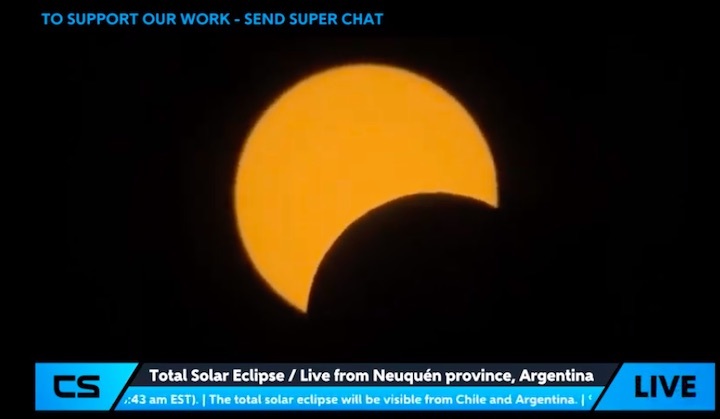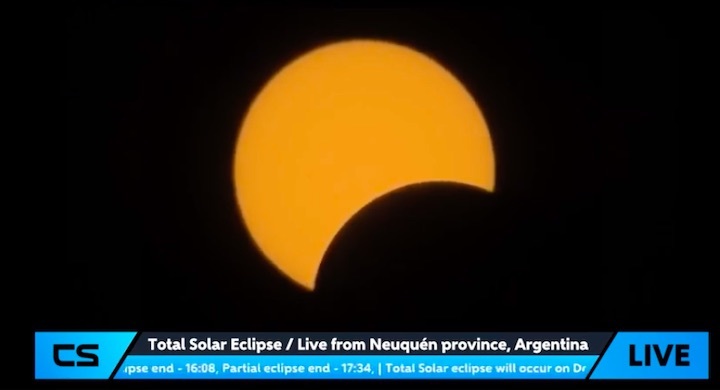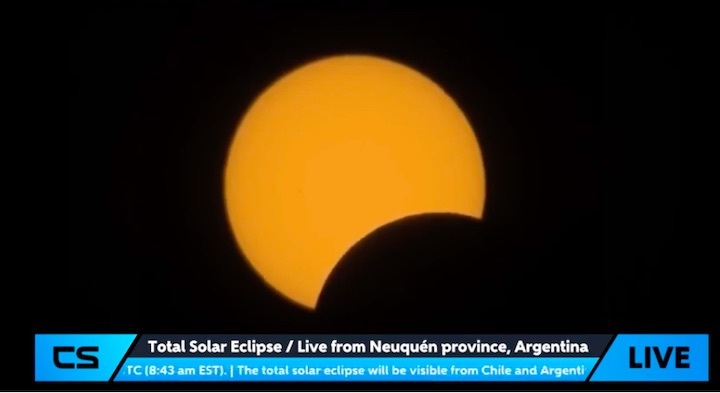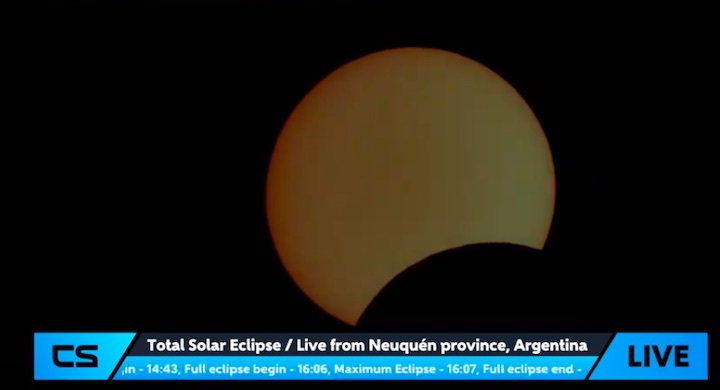11.12.2020
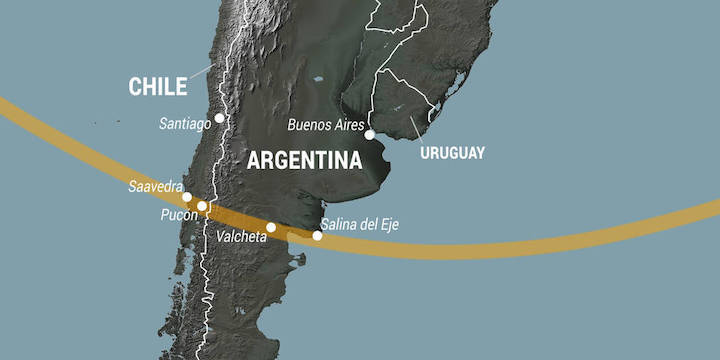
Lee esta historia en español aquí.
NASA will provide live coverage Monday, Dec. 14, of a solar eclipse that will pass over South America, treating parts of Chile and Argentina to views of a total eclipse of the Sun. A Spanish-language program will air on NASA Television and the public channel on the agency’s website. A separate livestream of the eclipse without narration will air on the media channel.
The programming will air in conjunction with the eclipse. The all-Spanish show will provide real-time views of the eclipse and discussions on how scientists use eclipses to study the Sun.
The hourlong Spanish show, “El eclipse solar total de América del Sur de 2020,” will air at 10:30 a.m. EST. Two NASA scientists, Yari Collado-Vega and Bea Gallardo-Lacourt, will provide commentary during views of the eclipse, with the total eclipse visible during the show at 11:02 a.m. The livestream, courtesy of the Pontificia Universidad Católica de Chile and captured through telescopes at the Observatorio Docente UC, Santa Martina, will play on the media channel from 9:40 a.m. to 12:31 p.m.
Watch and Engage on Social Media
The Spanish show will also stream on NASA’s Spanish social media accounts. Submit eclipse questions using #preguntaNASA.
Twitter: @NASA_es
Facebook: Facebook.com/nasaes
YouTube: YouTube.com/nasa_es
Learn how to watch an eclipse safely.
More details on NASA’s work with eclipses is available at:
Quelle: NASA
----
Update: 14.12.2020
.
The total solar eclipse of 2020: What time does it begin?
The only total solar eclipse of 2020 is coming up this Monday (Dec. 14) and here's how you can follow along with its phases.
The total solar eclipse, which is the last eclipse of 2020, will be visible to observers across a narrow swath of the South Pacific, Chile, Argentina and the southern Atlantic Ocean, while a partial eclipse will be visible from a wider region in the Pacific, southern South America and Antarctica.
Solar eclipses occur when the moon appears to pass in front the sun as viewed from Earth. When they line up exactly, the moon covers the entire sun and causes a total eclipse, while at other times it only covers part of the sun in a partial eclipse. There is not a solar eclipse every month because the moon's orbit is tilted with respect to the sun and does not always align with the star.
What time is the solar eclipse?
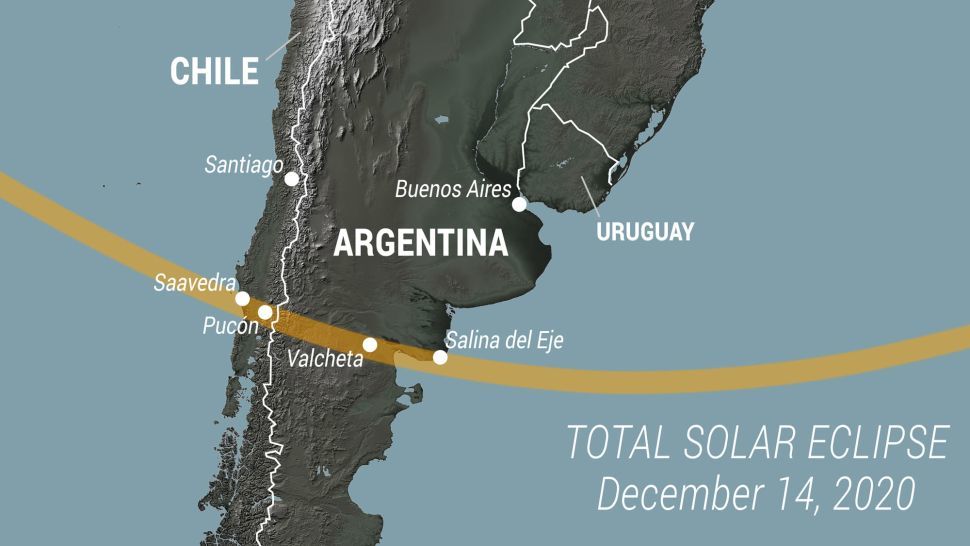
So how will the 2020 solar eclipse play out?
The partial phase eclipse will first begin at 8:33 a.m. EST (1333 GMT) and be visible to observers way out in the Pacific Ocean, thousands of miles off the southeast coast of the Hawaiian Islands. The total phase of the eclipse will first be visible almost an hour later at 9:32 a.m. EST (1432 GMT).
Maximum eclipse, or the moment of greatest eclipse where the eclipse has the longest totality (or time where the sun is covered by the moon), kicks off a couple of hours later at 11:13 a.m. EST (1613 GMT). The point of greatest eclipse will occur 18 miles (29 kilometers) northwest of the village and municipality Sierra Colorada in Argentina.
The last observers with a chance to view the total eclipse will catch the last glimpses at 12:54 p.m. EST (1754 GMT) while the last to view the partial eclipse will last see it at 1:53 p.m. EST (1853 GMT).
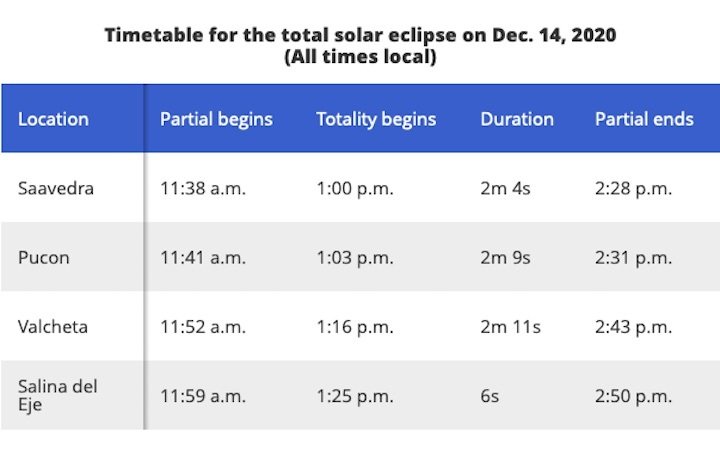
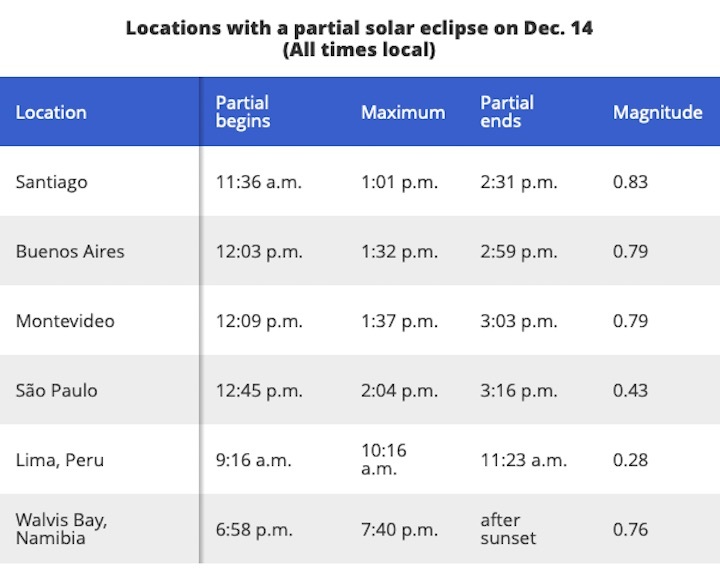
Unfortunately, there are only a handful of locations where people will actually be able to catch the total solar eclipse. But there are still some places where skywatchers will be able to look up and (safely, without looking directly at it without eye protection), enjoy the eclipse. Warning: Never stare directly at the sun without proper safety glasses as severe eye damage can result (although observing during the brief totality phase can be done with care). Scientists use special filters on binoculars and telescopes to safely observe solar eclipses.
For example, in Cerro Bayo in Rio Negro, Argentina, the total solar eclipse will be visible — those in the region will have 1 minute and 53 seconds of totality and will be able to spot the total eclipse beginning at 1:10 p.m. local time and ending at 1:12 p.m., according to timeanddate.com.
Meanwhile, skywatchers in Villarrica,Chile will also be privy to the total solar eclipse with a whopping 2 minutes and 9 seconds of totality to look forward to. The total eclipse will begin at 1:02 p.m. local time and end at 1:04 p.m local time, according to timeanddate.com.
The eclipse will have an approximately 56-mile-wide (90 kilometers) path of totality and is set to travel eastward across Chile and Argentina. The last location to be able to spot the eclipse will be Salina del Eje in Argentina. The total solar eclipse will officially end off the coast of Namibia after traveling across the Atlantic Ocean, according to In-The-Sky.org.
Following this solar eclipse, the next solar eclipse will be an annular solar eclipse that will move over Canada, Greenland and regions of Asia on June 10, 2021. It won't be until next December, Dec. 4, 2021, that we get another total solar eclipse. This next total solar eclipse will be over South America.
